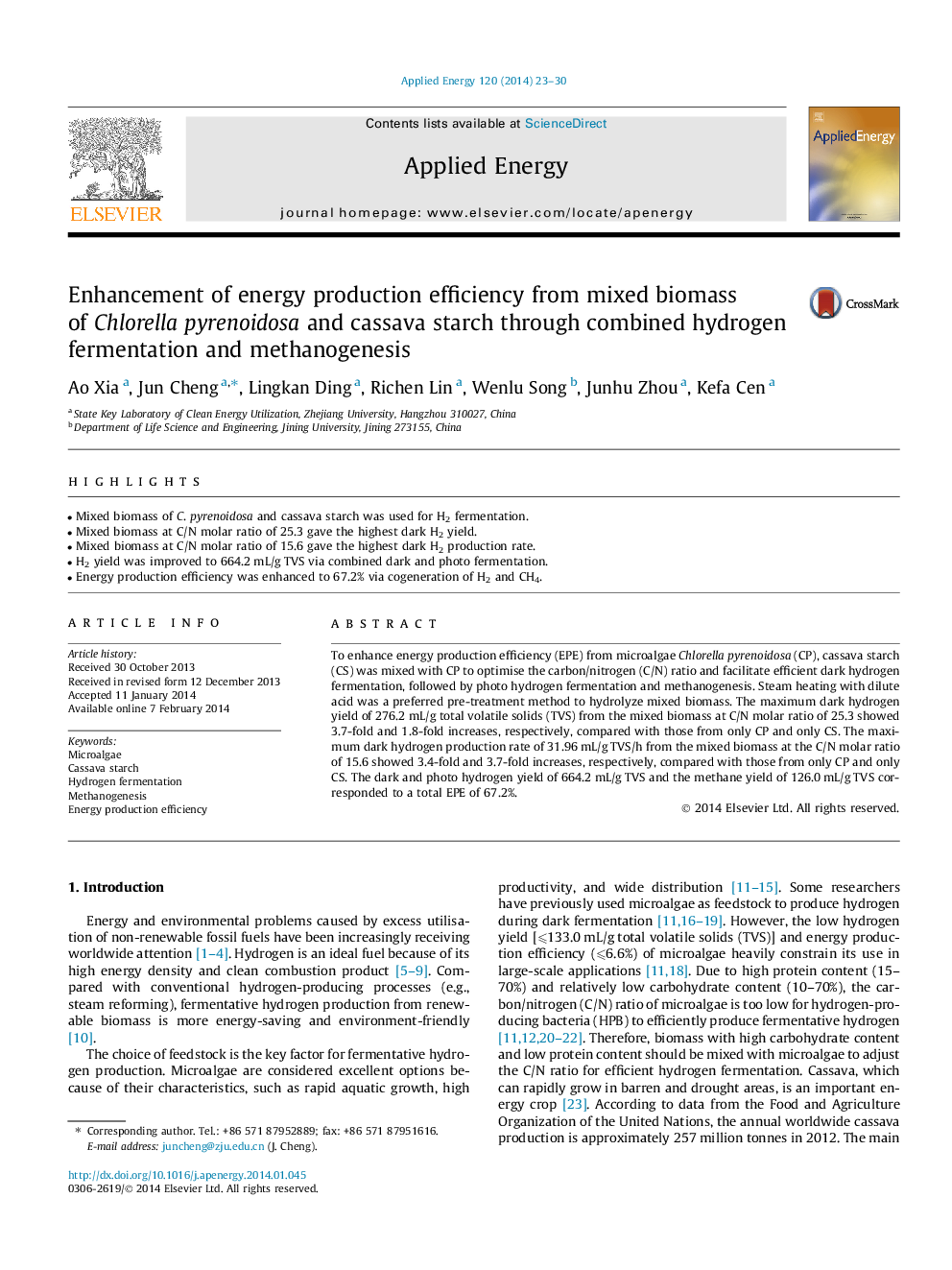| Article ID | Journal | Published Year | Pages | File Type |
|---|---|---|---|---|
| 242761 | Applied Energy | 2014 | 8 Pages |
•Mixed biomass of C. pyrenoidosa and cassava starch was used for H2 fermentation.•Mixed biomass at C/N molar ratio of 25.3 gave the highest dark H2 yield.•Mixed biomass at C/N molar ratio of 15.6 gave the highest dark H2 production rate.•H2 yield was improved to 664.2 mL/g TVS via combined dark and photo fermentation.•Energy production efficiency was enhanced to 67.2% via cogeneration of H2 and CH4.
To enhance energy production efficiency (EPE) from microalgae Chlorella pyrenoidosa (CP), cassava starch (CS) was mixed with CP to optimise the carbon/nitrogen (C/N) ratio and facilitate efficient dark hydrogen fermentation, followed by photo hydrogen fermentation and methanogenesis. Steam heating with dilute acid was a preferred pre-treatment method to hydrolyze mixed biomass. The maximum dark hydrogen yield of 276.2 mL/g total volatile solids (TVS) from the mixed biomass at C/N molar ratio of 25.3 showed 3.7-fold and 1.8-fold increases, respectively, compared with those from only CP and only CS. The maximum dark hydrogen production rate of 31.96 mL/g TVS/h from the mixed biomass at the C/N molar ratio of 15.6 showed 3.4-fold and 3.7-fold increases, respectively, compared with those from only CP and only CS. The dark and photo hydrogen yield of 664.2 mL/g TVS and the methane yield of 126.0 mL/g TVS corresponded to a total EPE of 67.2%.
